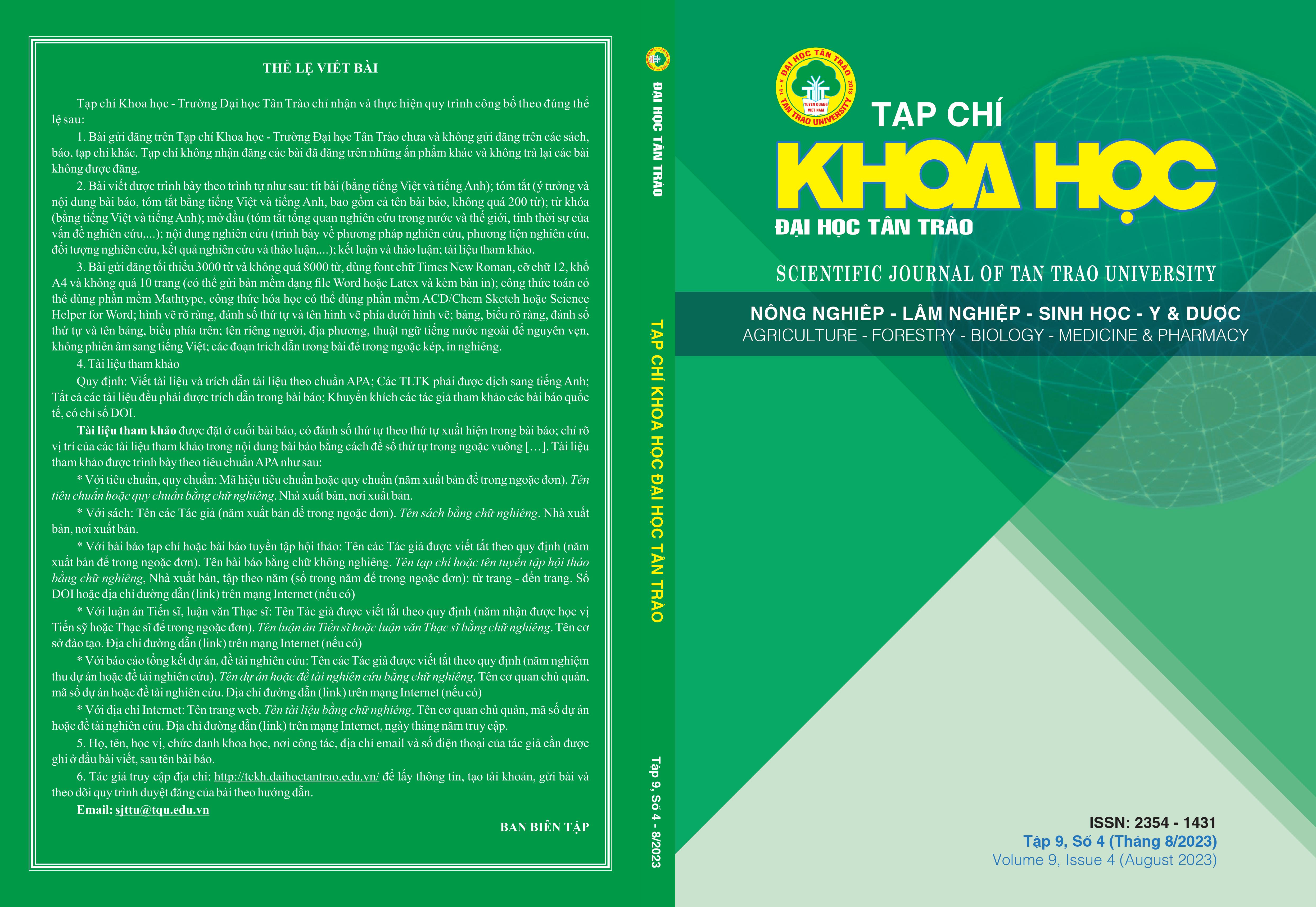RESEARCH ON THE CD ADSORPTION CAPABILITY OF BIOCHAR GENERATED FROM THE BARK OF ACACIA PLANTS IN A WATER ENVIRONMENT
DOI:
https://doi.org/10.51453/2354-1431/2023/997Keywords:
Bio char produced from acacia shell, Aqueous medium, capacity, Cd, PbAbstract
This paper focuses on studying the effect of pH and time on Cd adsorption capacity in aqueous medium of bio char produced from acacia shell. The results show that pH has an effect on the Cd adsorption capacity of acacia shell bio char which is calcined at different temperatures. The Cd adsorption capacity of them increased sharply when the pH of the solution is increased from 5 to 6. When the pH is increased from 6 to 8, the Cd adsorption capacity is almost unchanged. And in the experimental period from 5 minutes to 60 minutes, the longer the sample shaking time, the higher the Cd adsorption capacity.
Downloads
References
[1] Cat, V. (1999). Water treatment technology and chemical foundations, Youth Publishing House, Hanoi.
[2] Nham, H. (2002). 2nd edition of inorganic chemistry, Education Publishing House, Hanoi.
[3] Thao, H.P (2021). Analytical chemistry doctoral dissertation from Da Lat University: "Study on the Adsorption Capacity of Some Heavy Metal Ions (As5+/As3+, Cr6+/Cr3+, Pb2+, Cd2+) in Aqueous Environment by the Three-Leaf Pine Needles".
[4] Chai, W. S., Cheun, J. Y., Kumar, P. S., Mubashir, M., Majeed, Z., Banat, F., ... & Show, P. L. (2021). A review on conventional and novel materials towards heavy metal adsorption in wastewater treatment application. Journal of Cleaner Production, 296, 126589.
[5] Deng, J., Liu, Y., Liu, S., Zeng, G., Tan, X., Huang, B., ... & Yan, Z. (2017). Competitive adsorption of Pb (II), Cd (II) and Cu (II) onto chitosan-pyromellitic dianhydride modified biochar. Journal of colloid and interface science, 506, 355-364.
[6] Huang, G., Wang, D., Ma, S., Chen, J., Jiang, L., & Wang, P. (2015). A new, low-cost adsorbent: Preparation, characterization, and adsorption behavior of Pb (II) and Cu (II). Journal of colloid and interface science, 445, 294-302.
[7] Jiang J., Xu R. K., Jiang T. Y., Li Z. (2012), “Immobilization of Cu (II), Pb (II) and Cd (II) by the addition of rice straw derived biochar to a simulated polluted Ultisol”, Journal of Hazardous Materials 229-230, pp. 145 - 150.
[8] Jiang, J., Xu, R. K., Jiang, T. Y., & Li, Z. (2012). Immobilization of Cu (II), Pb (II) and Cd (II) by the addition of rice straw derived biochar to a simulated polluted Ultisol. Journal of hazardous materials, 229, 145-150
Downloads
Published
How to Cite
Issue
Section
License

This work is licensed under a Creative Commons Attribution-ShareAlike 4.0 International License.
All articles published in SJTTU are licensed under a Creative Commons Attribution-ShareAlike 4.0 International (CC BY-SA) license. This means anyone is free to copy, transform, or redistribute articles for any lawful purpose in any medium, provided they give appropriate attribution to the original author(s) and SJTTU, link to the license, indicate if changes were made, and redistribute any derivative work under the same license.
Copyright on articles is retained by the respective author(s), without restrictions. A non-exclusive license is granted to SJTTU to publish the article and identify itself as its original publisher, along with the commercial right to include the article in a hardcopy issue for sale to libraries and individuals.
Although the conditions of the CC BY-SA license don't apply to authors (as the copyright holder of your article, you have no restrictions on your rights), by submitting to SJTTU, authors recognize the rights of readers, and must grant any third party the right to use their article to the extent provided by the license.


